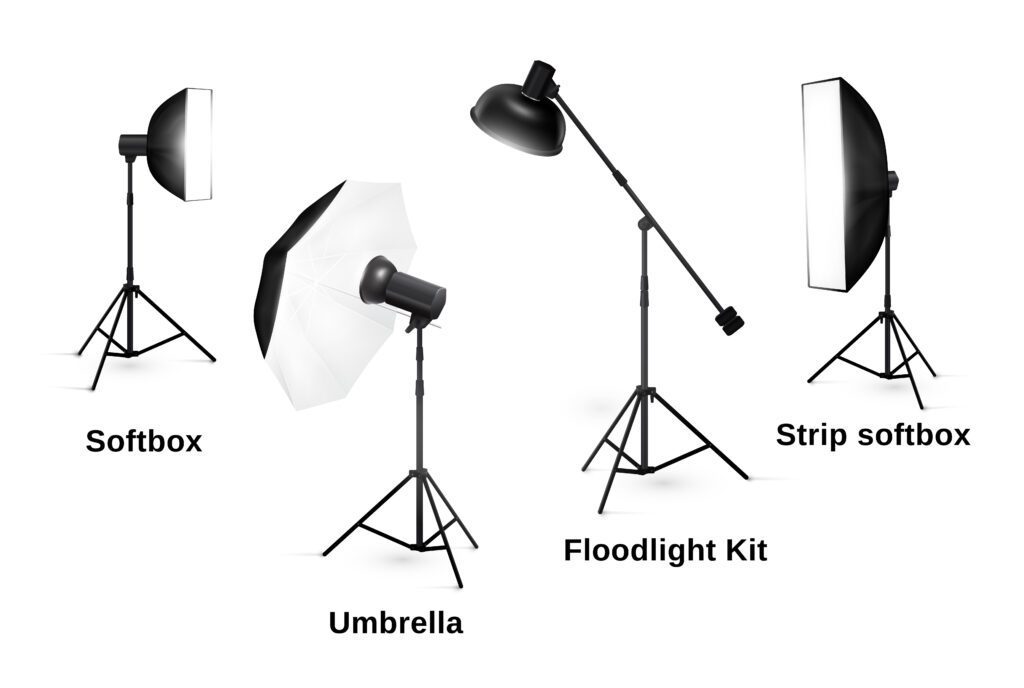
Outline
Introduction
Softbox lights have become an essential tool for photographers and videographers alike. These versatile lighting solutions offer a soft, diffused light that helps create stunning visuals with a natural and flattering look. In this article, we will explore the world of softbox lights, their benefits, different types, and how they can enhance your creative journey.
- Profoto
- Godox
- Neewer
- Westcott
- Elinchrom
- Frequently Asked Questions
- What makes softbox lights different from other lighting options?
- Can softbox lights be used outdoors?
- How many softbox lights do I need for a professional setup?
- Are LED or fluorescent softbox lights better?
- Can softbox lights be used for live streaming?
Understanding Softbox Lights
Softbox lights are light modifiers used in photography and videography to produce soft and even illumination. They consist of a fabric-like material stretched over a metal frame, which holds a light source. The inner surface of the softbox is lined with reflective material to maximize light output.
These lights work by diffusing the harsh light emitted by the light source, resulting in a softer and more flattering illumination on the subject.
The Advantages of Softbox Lights
- Soft and Flattering Light: Softbox lights produce gentle, diffused light that reduces harsh shadows and minimizes skin imperfections, making them ideal for portrait photography.
- Reducing Harsh Shadows: The diffusion material in softboxes scatters the light, softening shadows and creating a more natural and even illumination.
- Versatility in Lighting Setups: Softbox lights can be used in various configurations, allowing photographers and videographers to achieve different lighting effects.
Types of Softbox Lights
Square Softboxes
Square softboxes are the most common type and are widely used for general photography and videography. They offer a balanced and uniform light spread, making them suitable for a wide range of applications.
Rectangular Softboxes
Rectangular softboxes are popular among portrait photographers as they create a more natural-looking catchlight in the subject’s eyes. They are also well-suited for full-body shots.
Octagonal Softboxes
Octagonal softboxes, also known as octaboxes, produce rounded catchlights and offer a unique lighting effect. They are often used for fashion and beauty photography.
Strip Softboxes
Strip softboxes are long and narrow, producing a narrow band of light. They are commonly used for rim lighting or creating highlights in product photography.
Ring Lights with Softbox Attachment
Ring lights with softbox attachments combine the benefits of a softbox with the unique circular catchlight produced by ring lights. They are commonly used in portrait and beauty photography.
Choosing the Right Softbox Size
Selecting the appropriate softbox size depends on several factors:
- Consider Your Subject: For smaller subjects, such as individual portraits, a smaller softbox is sufficient. Larger subjects or groups may require larger softboxes for even coverage.
- Space and Portability: If you have limited space or frequently work on location, consider smaller and more portable softboxes.
- Lighting Intensity: Larger softboxes generally produce softer light, while smaller ones result in more focused illumination.
Setting Up Softbox Lights
Proper positioning and setup are crucial for achieving the desired lighting effects. Here’s a step-by-step guide:
- Positioning the Lights: Place the softboxes at 45-degree angles to the subject for classic portrait lighting.
- Adjusting Light Angles: Experiment with different angles to control shadows and highlights.
- Using Diffusion Panels: Some softboxes come with removable front diffusion panels to further soften the light.
- Controlling Light Temperature: Use color temperature gels or bulbs to adjust the light’s warmth.
Softbox Lights vs. Umbrella Lights
While softbox lights and umbrella lights both offer diffused lighting, they have distinct differences:
- Light Control: Softboxes provide more precise control over the light direction and spread compared to umbrellas.
- Portability and Setup: Umbrella lights are generally more portable and quicker to set up.
- Light Spill: Softboxes contain light better than umbrellas, reducing unwanted spillage.
DIY Softbox: Creating Your Own Softbox Lights
If you’re on a budget or enjoy DIY projects, making your own softbox can be a fun and cost-effective option. Here’s a simple guide:
Materials Needed:
- Cardboard or foam board
- White bedsheets or diffusion fabric
- Aluminum foil or reflective material
- Tape or adhesive
- Light source (lamp or strobe)
Step-by-Step Guide:
- Cut the cardboard into the desired softbox shape (square, rectangular, or octagonal).
- Cover the interior with aluminum foil or reflective material to maximize light reflection.
- Attach the diffusion fabric to the front of the softbox using tape or adhesive.
- Place the light source inside the DIY softbox, and you’re ready to shoot!
Tips for Better Results:
- Use white bedsheets for diffusion to create softer light.
- Experiment with different materials to achieve unique lighting effects.
Maintaining and Cleaning Softbox Lights
To ensure the longevity of your softbox lights, follow these maintenance tips:
- Regular Cleaning Tips: Clean the softbox fabric regularly with a lint roller or a soft brush to remove dust and dirt.
- Storing Softbox Lights: Fold the softbox carefully and store it in a protective bag or case when not in use.
- Replacing Diffusion Panels: Over time, diffusion panels may become worn or discolored. Replace them to maintain optimal light quality.
Softbox Lights for Different Applications
Softbox lights find applications in various creative fields:
- Portrait Photography: Softbox lights create flattering portraits with soft, even lighting.
- Product Photography: They help highlight product details and reduce unwanted reflections.
- Studio Video Lighting: Softbox lights provide consistent and soft illumination for video shoots.
- Food Photography: Soft lighting enhances the appearance of food items, making them more enticing.
Top Softbox Light Brands in the Market
Several brands offer high-quality softbox lights suitable for different budgets and preferences:
- Profoto: Known for its professional-grade lighting equipment used by top photographers worldwide.
- Godox: Offers a wide range of softboxes suitable for amateurs and professionals alike.
- Neewer: Provides affordable softbox options without compromising on quality.
- Westcott: Known for its innovative softbox designs and reliable products.
- Elinchrom: Offers a diverse selection of softboxes for professional studio setups.
Conclusion
Softbox lights have revolutionized the world of photography and videography, offering a versatile and effective lighting solution. Their ability to produce soft and flattering light makes them a favorite among photographers and videographers of all levels. Whether you’re shooting portraits, products, or videos, softbox lights are a valuable addition to your creative toolkit.
Frequently Asked Questions
- What makes softbox lights different from other lighting options?
Softbox lights provide a softer and more diffused light compared to other lighting solutions like bare bulbs or umbrella lights. They offer better control over light direction and minimize harsh shadows.
- Can softbox lights be used outdoors?
Yes, softbox lights can be used outdoors, especially during overcast days or in shaded areas. However, windy conditions may pose a challenge in maintaining stability.
- How many softbox lights do I need for a professional setup?
The number of softbox lights needed depends on the specific setup and the desired lighting effects. In most cases, a key light and a fill light are sufficient, but additional lights can be used for background or accent lighting.
- Are LED or fluorescent softbox lights better?
Both LED and fluorescent softbox lights have their advantages. LED lights are more energy-efficient and generate less heat, making them suitable for extended shooting sessions. On the other hand, fluorescent lights may have a broader color temperature range and can be more affordable.
- Can softbox lights be used for live streaming?
Absolutely! Softbox lights are excellent for live streaming, as they produce flattering illumination for the subject and can enhance the overall visual quality of the stream.
